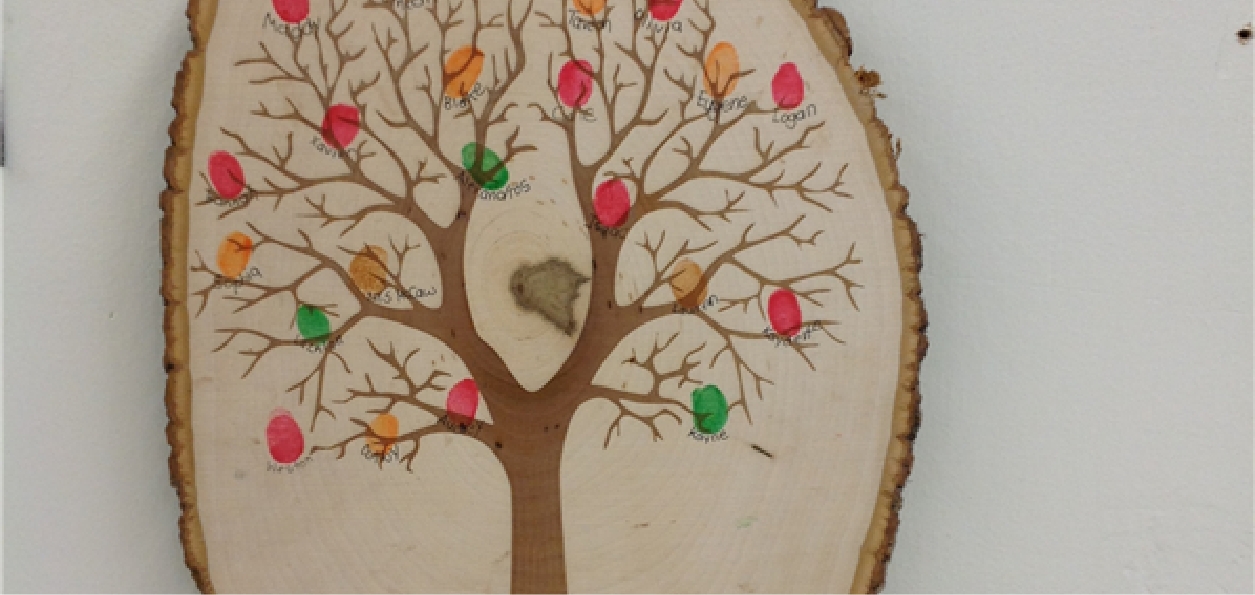As there has been an increase in anxiety with young children, I have been reflecting on my practice to determine what changes should be made to accommodate the children in my classroom. As I also work as an education consultant with teacher groups I believed that this was an opportunity to help other primary teachers tweak their practice to accommodate these children. I also knew that by making these changes that all students in my class would benefit.
Our inquiry question was – “In what ways can we work together to improve the mental health of our students so that everyone feels that they belong and can be successful?”
This was a very exciting year as a team of students, parents, supportive staff, student teachers and myself worked together to establish a community of trust, safety and belonging. Using a mantra of kindness, patience and time I reflected on my daily schedule, indoor/outdoor program, use of community resources/people and facilitators for programs new to my practice. We focused on mental health.
One highlight of our year together was ten sessions of yoga. The instructor planned a flow to meet the specific needs of my students; balance, strength and endurance. We practiced the flow with her each week which the children referred to as Yoga Thursday. Then we used her flow as a transition to our forest morning and later when it was too wet outdoors we used the flow as a transition from outdoor to indoor. My student teacher, also a yoga enthusiast continued throughout her six week practicum to use yoga as a transition and as a calming tool.
Our school counselor visited our classroom three times during exploration time to observe and get to know the children. Then she introduced Sunshine circle which is a kindergarten program focusing on empathy and friendship. We each worked with a group and team taught the program. When she was finished I integrated some of the activities into our afternoon circle activities which also included conversation circle, sharing of special moments from home, storytelling and special guests. This circle time was precious. For example, when we visited Neck Point in the last weeks of school the children asked for circle time to share their seashore experiences. One child who was just about to leave with her family asked to stay a little longer for our conversation circle.
To reduce outdoor recess anxiety, I buddied with two older groups; The 3/4 group was our outdoor play and reading partners and the 2/3 group met with us every other week to do nature art. The 2/3 students would do the art activity with their teacher and then teach it to a younger buddy. Having these friendships helped my students when outdoors at recess as they knew the names of over forty older students, had relationships with them (students are kinder to younger students when they know them) and were consistently helpful on the playground.
I selected the Mind up program because a colleague at my school was using it and could be my mentor. I found it was difficult to integrate into my existing program because like most teachers I love my program and struggled with what to give up in order to add something new. I purchased the book and used some of the strategies from the program focusing more on empathy.
I attended a refresher workshop on the Fun Friends Program prior to implementing it in my classroom. The Fun Friends program included a parent workshop on the program, a parent evening on anxiety in young children and a parent workbook. The parents working through their family workbook while I introduced the activities in the classroom.
I set aside a classroom wall dedicated to children selecting personal pieces to display in picture frames. Initially they would all choose the same activity but over time they began to choose a sample that reflected their personal learning journey. For example, by the final month the wall contained samples of writing, science, math and art. This was a great tool for self-esteem and the children were encouraged to notice the wide diversity of choices being displayed.
While the bulk of the grant was used to cover the yoga sessions some of the funds went towards the purchase of a classroom bench. This enabled multiple children to sit together to watch a puppet show, storytelling presentation (by peers), eat together, write together or draw together.
I used my classroom blog to post about our class learning, remind parents to visit us for family reading on our onsite mornings or to encourage them to join us on the offsite mornings. I also included lots of personal emails and notes to parents about their child’s success. For example, there was one boy in my class who was a great problem solver. He became the go to person in the room when children were unable to come to an agreement over a problem.
Something that stands out for me is that the students became interdependent quite quickly. For example initially it would take about 40 minutes for me to help them dress for the outdoors or end of day. After about five weeks they would line up in the hall and students began to turn to each other and do zippers and our time (over the year) has shrunk to three to five minutes. I think that the empathy was the biggest contribution to reducing anxiety that was evident in the beginning of the year.
Students has less anxiety about recess, working with a big buddy, new experiences, having a substitute teacher and changes in routines. When final reports were written about half of the class were exceeding grade level expectations and the rest were fully meeting!
One of the choices that I made with big buddies was to separate the class into two groups with one of the groups travelling to the big buddy classroom so that they grew to know the other teacher. I chose to do this when I had student teacher pods of 3 so that there were lots of adults to support the transition to a new environment. Later when the student teachers finished their practicum the children were no longer stressed or anxious about moving to a different classroom. The goal was to support the children with anxiety until the stress factor reduced or was eliminated. The children had a long relationship with student teachers as well as two other teachers on staff.
My reflections are that the yoga sessions helped a lot because the children learned as a group with support tools to calm themselves. The other strategy that worked well was the Sunshine Circle time which will now probably always be a part of my program. Thirdly the Art Gallery which reflected so much diversity was an excellent opportunity for children to notice all the different strengths that they have. Finally meeting, playing and working with big buddies created a safe school feeling for my students so that when the time came for them to share recess space with the whole school they were willing and able.
I would recommend all of these strategies for a classroom teacher interested in reducing anxiety in their students.

